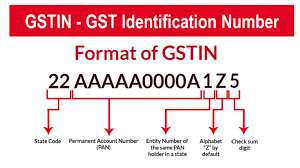The High Price of Neglecting Tyre Wear Indicators on My Two-Wheeler
As a seasoned rider, I thought I knew everything about maintaining my two-wheeler tyres. However, my overconfidence led me to ignore a crucial aspect—the tyre wear indicators. This simple oversight cost me dearly, both in terms of safety and money. In this article, I’ll share my experience and the valuable lessons I learned about the importance of monitoring 2 wheeler tyre wear.
Understanding Tyre Wear Indicators
2 wheeler tyres come equipped with built-in tread wear indicators, small raised bars located at the base of the main grooves in the tread pattern. These indicators serve as a visual guide to determine when a tyre has reached its wear limit, typically at 1.6 mm of remaining tread depth.
Tread depth plays a critical role in a tyre’s performance, especially in wet conditions. As the tread wears down, the tyre’s ability to displace water and maintain grip on the road surface diminishes. This loss of traction increases the risk of accidents, particularly due to aquaplaning or reduced braking efficiency.
The Consequences of Ignoring Wear Indicators
In my case, I had been riding on the same set of 2 wheeler tyres for an extended period without checking the wear indicators. As a result, the tread depth had worn down well below the recommended limit, compromising the tyres’ performance and safety.
The first consequence I experienced was a significant reduction in traction and stability, especially on wet roads. The worn tyres struggled to channel water effectively, leading to a loss of grip and control. This made cornering and braking more challenging and unpredictable, putting me at a higher risk of accidents.
Moreover, the worn tyres were more susceptible to punctures and sudden failures. The thin remaining tread was vulnerable to sharp objects and road debris, increasing the likelihood of a flat tyre or even a blowout while riding. Such incidents not only posed a safety hazard but also led to unexpected expenses for repairs or replacements.
The Financial Impact
Ignoring the tyre wear indicators not only compromised my safety but also had a significant financial impact. By continuing to ride on worn tyres, I accelerated their wear rate, leading to premature replacement.
Had I been proactive in monitoring the wear indicators and replacing the tyres at the appropriate time, I could have extended their lifespan and saved money in the long run. Instead, I found myself having to replace the tyres much sooner than expected, incurring additional costs that could have been avoided.
Lessons Learned
My experience taught me the importance of regularly checking 2 wheeler tyre wear indicators and replacing tyres promptly when they reach the wear limit. It’s a simple yet critical aspect of tyre maintenance that should never be overlooked.
To avoid making the same mistake, I now make it a habit to inspect my tyres regularly, paying close attention to the wear indicators. I also keep track of the tyre’s age and mileage to ensure timely replacements.
Additionally, I’ve learned the value of investing in high-quality tyres that prioritise safety and durability. Brands like Eurogrip offer a range of two wheeler tyres designed to provide excellent grip, stability, and longevity, making them a reliable choice for riders who prioritise safety and performance.
Don’t Turn a Blind Eye on Warnings
Ignoring 2 wheeler tyre wear indicators is a costly mistake that no rider should make. It compromises safety, increases the risk of accidents, and leads to premature tyre replacement. By regularly monitoring tread depth and replacing tyres when necessary, you can ensure optimal performance, maintain a safer ride, and save money in the long run.
Don’t let overconfidence or negligence put you in a dangerous situation like I did. Prioritize tyre maintenance, pay attention to wear indicators, and invest in quality tyres from trusted brands like Eurogrip. Your safety and wallet will thank you for it.
Publisher: Overly Post













